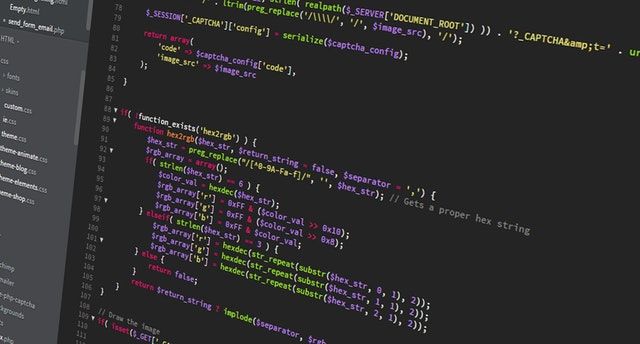Top 8 VueJs Best Practices to Follow in the Year 2021

In today’s time, when modern front-end development has become popular in the technology world, Vue.js is observing more growth than ever before and is spreading its growth with each passing day.
It has become one of the trendiest progressive frameworks for creating interactive user interfaces.
VueJs is a tool that is helping developers all around the world in creating unique applications and an immensely rewarding experience. It comes with amazing patterns, outstanding community support, and a vast library.
Basically, VueJs is one of the best and easiest front-end frameworks in comparison with other JavaScript frameworks.
VueJs is making the developers’ life easy and this is the main reason behind them opting for it and not any other frameworks.
Therefore, in this blog, we will go through all the best practices of VueJs that can help the developers work easily and efficiently with it while creating apps for their clients.
8 VueJs Best Practices
There are some of the top VueJs best practices that every front-end development company can follow in 2021 –
1. Naming Commits
When the application develops and grows, the need to browse the history of components becomes necessary. When any of the VueJs development team doesn’t follow this convention for naming the commits, it becomes essential to recognize and understand what each of the commits does.
And for this reason, the excerpts in the VueJs community follow the following steps and try to make the commits easier when the developers go through the app development project’s history. Here are those steps –
<type>(< scope >): <subject of the project>
<BLANK LINE>
<body>
<BLANK LINE>
<footer>
2. Use Actions
When the APIs are called within the Vuex actions, they have the capability to make it much more convenient to gather all the required data and offer a level of encapsulation and reusability. When the developer needs to fetch the same web page from different places, then they need to take the help of the right parameters and dispatchers.
This enables fetching, committing, and returning data with no duplicate code. Besides, if the VueJS developer needs to apply the same logic when the web page has already been gathered and it can be done in the same place to decrease the server load and make it work easily. This concept is very convenient when the developers need to track the system’s actions into the Mixpanel events.
3. Use Key Inside V-for
When the VueJs app developers use the key attribute with the v-for directive, it can help the application be predictable and constant whenever the need for data manipulation arises.
This is essential to make Vue track the state of the component and have a constant reference to various other elements. For instance, keys can be very essential when the need for Vue transition or animation arises. Without keys, Vue can only try to make the DOM somewhat essential.
This clearly means that the elements in the v-for may behave improperly or appear out of order. Therefore, if the developer has a unique key reference for each element, then they can predict how the Vue application can manage DOM manipulation in a better way. Here is the example of bad and good V-for key usage –
<– BAD–>
<div v-for=’one product in products’> </div>
<– GOOD–>
<div v-for=’one product in products’ :key=’product.id’> </div>
4.Third-party Packages
When a team of expert VueJs developers is working on the same app development project, the numbers of installed packages are much higher than expected and the chances of no one paying attention to it become higher. And this can directly or indirectly affect the performance of the VueJs application.
For this reason, the developers try to improve the performance of the packages by using import cost packages to have a glance at all the imported modular libraries and identifying the fault in it from the stage of its growth.
5. Code Splitting
When it comes to VueJs applications, performance plays an important role.
Especially when the application is getting bigger and bigger, maintaining its performance becomes the utmost important task for the development team. The developers then need to make the code of that application efficient and fast as much as they can. And for this, they can follow few concepts like-
- Async Components Coding
- Single File Components Coding
- Dynamic Module Loading
6. Stay Consistent
The VueJs app development companies use shorthand for directives to make sure that the application stays consistent and doesn’t see a downfall. And these directives are as follows –
- @ for v-on
- # for v-slot
- : for v-bind
This is one of the best VueJs practices that every developer can consider. But the development team must be very careful while using these directives throughout the project. But it must not be used from the start. This structure enables the developers in making the VueJs project more consistent and also makes the code readable.
7. Use API Factories
The majority of the expert VueJs developers create this.$api helper that can be called anywhere when the need to fetch the API endpoints becomes essential.
And at the root of the Vue project, the experts create a folder of APIs that includes all the required classes. One such example is listed below –
API
- auth.js
- teams.js
- notifications.js
Each one of the APIs is grouping all the endpoints for its specific category. And for this, the development team also initializes this pattern with a plugin in their application.
8. Validate the Props
The last practice in this list is validating the props.
Like other practices, it is also one of the best VueJs practices to follow. When the development team is working on creating a large-scale project, remembering all the required conventions, types, and formats that must be used in a prop is not easy. Therefore, the developers use the following write prop validation code –
props: {status: { type: String, required: true, validator: function (value) {return [ ‘syncing’, ‘synced’, ‘version-conflict’, ‘error’ ].indexOf(value) !== -1}}}
Conclusion
As seen in this blog, all the above-listed points are the most essential VueJs practices that any front-end development company can consider while creating an outstanding, unique, and user-friendly Vue.js application.
Therefore, if you are a VueJs developer who is planning to develop an application for your client, following such practices can be the best option to bring an amazing app to life.
These key points of VueJs app development can help in creating a performance-obsessed real-time app that can offer the best results.






